Two-Photon Fluorescence Microscopy (2PF)
Two-Photon Fluorescence Microscopy (2PF)
Two-Photon Fluorescence Microscopy
Two-Color (Non-Degenerate) Two-Photon Fluorescence Imaging
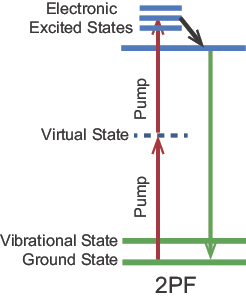
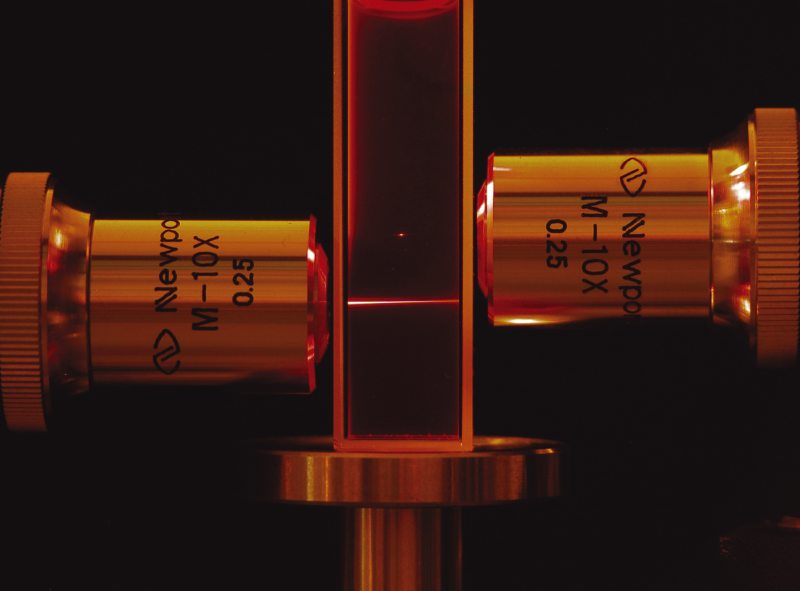
A schematic of a microscope system for 2PF is shown in Figure 3. A laser is focused to a tight spot in the specimen plane and scanned in a raster over the sample. When the laser focus overlaps with fluorescent molecules in the sample, fluorescence is generated selectively in the tiny focal volume and detected by photodetectors. The signal is spatially-mapped to generate individual pixels of an image by a data acquisition computer. The principal differences between confocal and 2PF microscopes are the laser and the fluorescence detection path. In 2PF microscopy, all fluorescent photons collected by the objective constitute useful signal as the detector pinhole is not required.
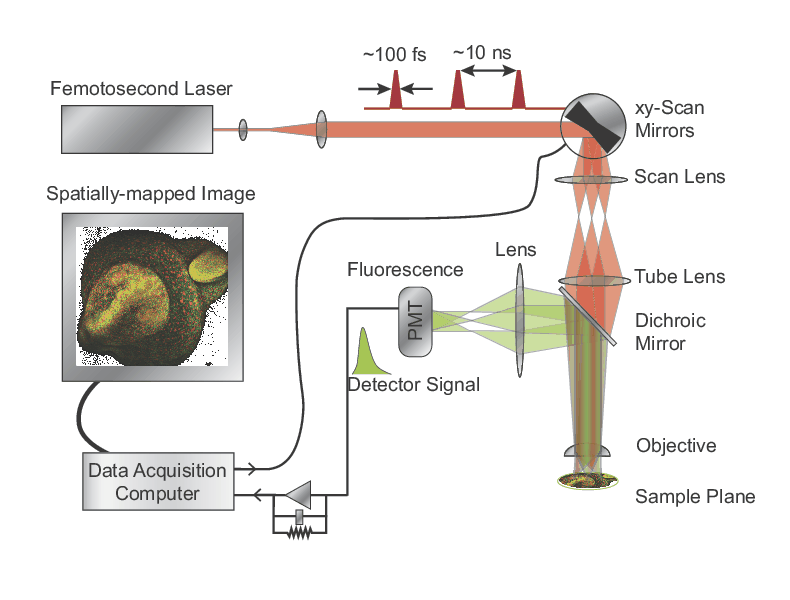
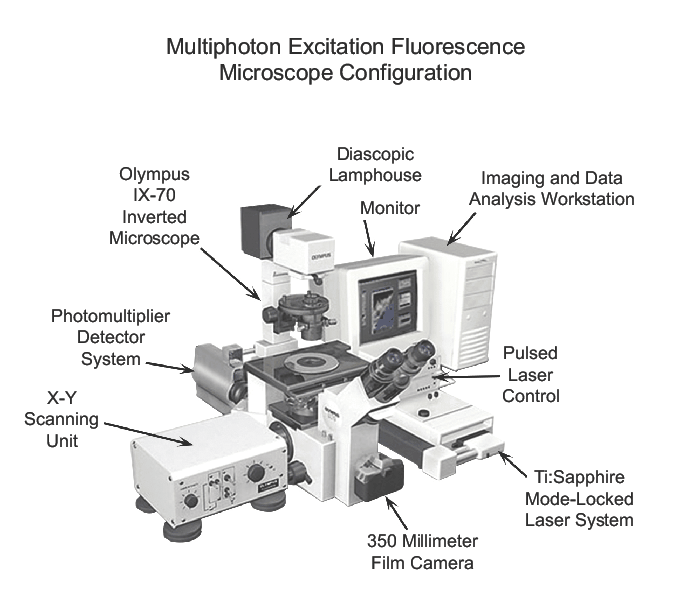
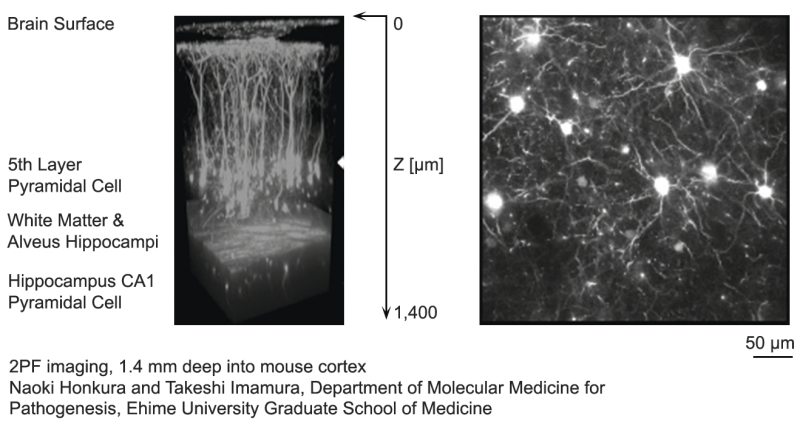
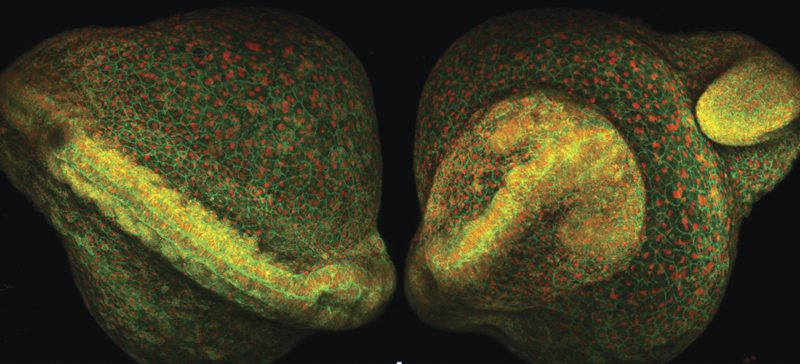
For nearly 20 years, the MKS Spectra-Physics MaiTai® laser has been the workhorse of bio-imaging labs around the world. It is based on traditional Ti:Sapphire technology and offers a 690 nm - 1040 nm tuning range with up to 2 W of output power and a 100 fs pulse duration. Following its initial release in 1999, it was the first laser to provide automatic wavelength tuning. Then, in 2007, it was the first laser to integrate automatic dispersion control through its DeepSee™ laser technology. In addition to its application in multiphoton microscopy, the MaiTai laser is also used in the areas of time-resolved photoluminescence, nonlinear spectroscopy, optical computed tomography, surface SHG, terahertz imaging, semiconductor metrology, materials processing, and laser amplifier seeding.
The InSight® X3™ is the third generation of MKS Spectra-Physics' industry-leading laser platform that is specifically designed for advanced multiphoton microscopy applications. The InSight X3 laser features a broad 680 nm to 1300 nm continuous, gap-free tuning range from a single source, nearly doubling the tuning range of legacy Ti:Sapphire ultrafast lasers. The system delivers high average and peak power levels across the tuning range, including the critical NIR wavelengths above 900 nm, which allow for the deepest penetration in vivo imaging. With MKS Spectra-Physics' integrated patented DeepSee™ laser technology, the industry standard dispersion pre-compensator, fs pulses are optimally delivered through a microscope to the sample for maximum fluorescence and penetration depth.
Related Topics
Bioimaging